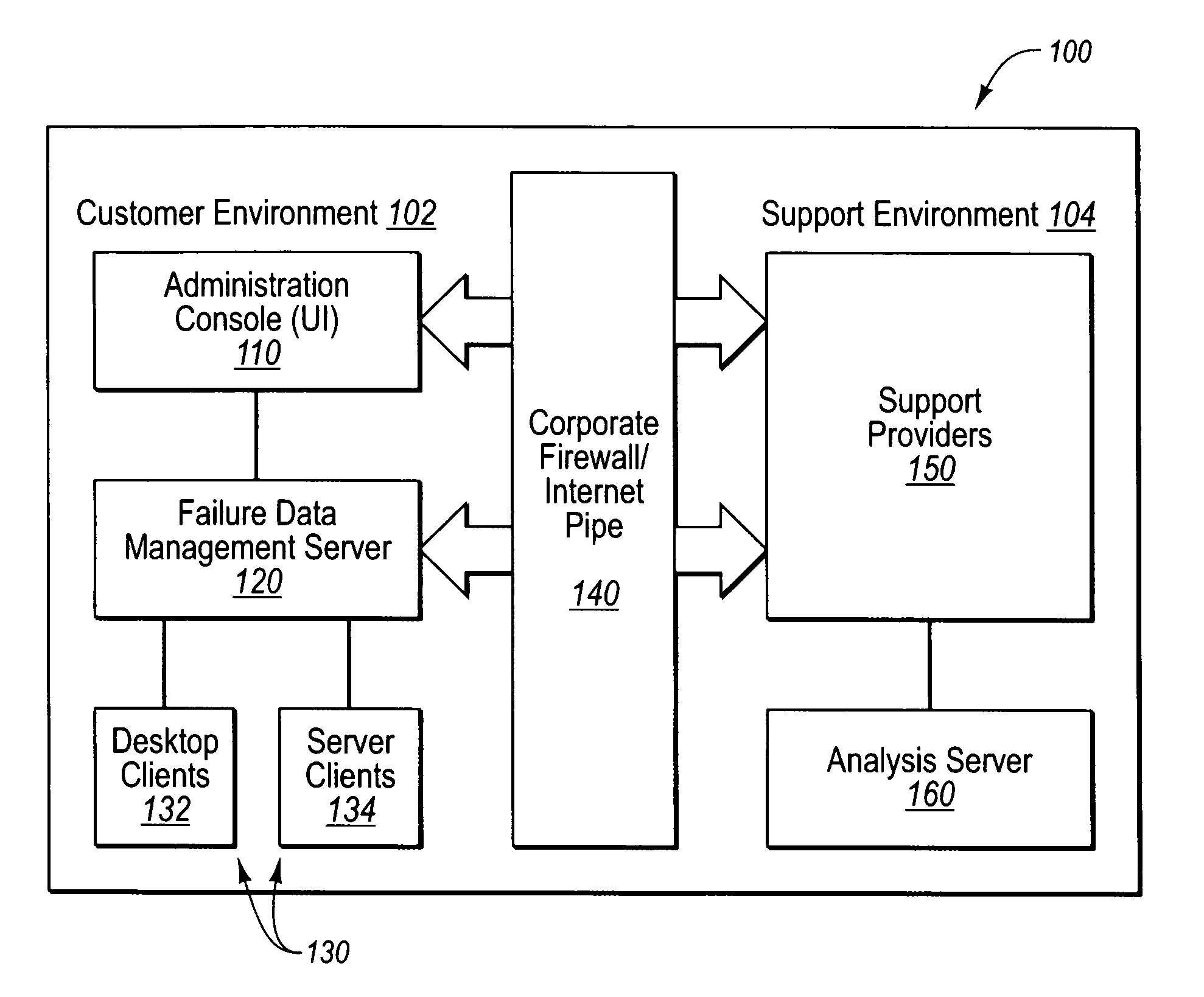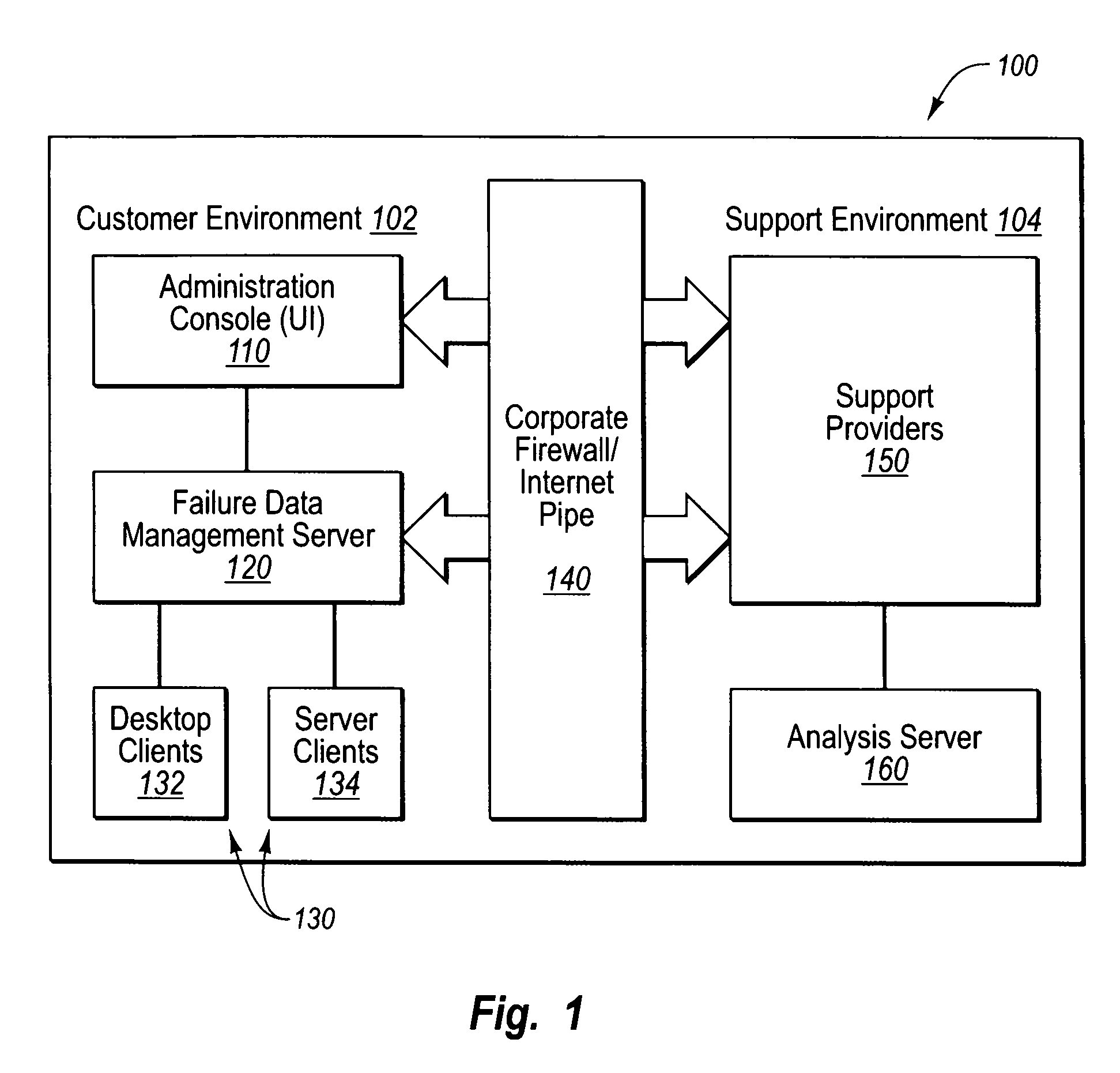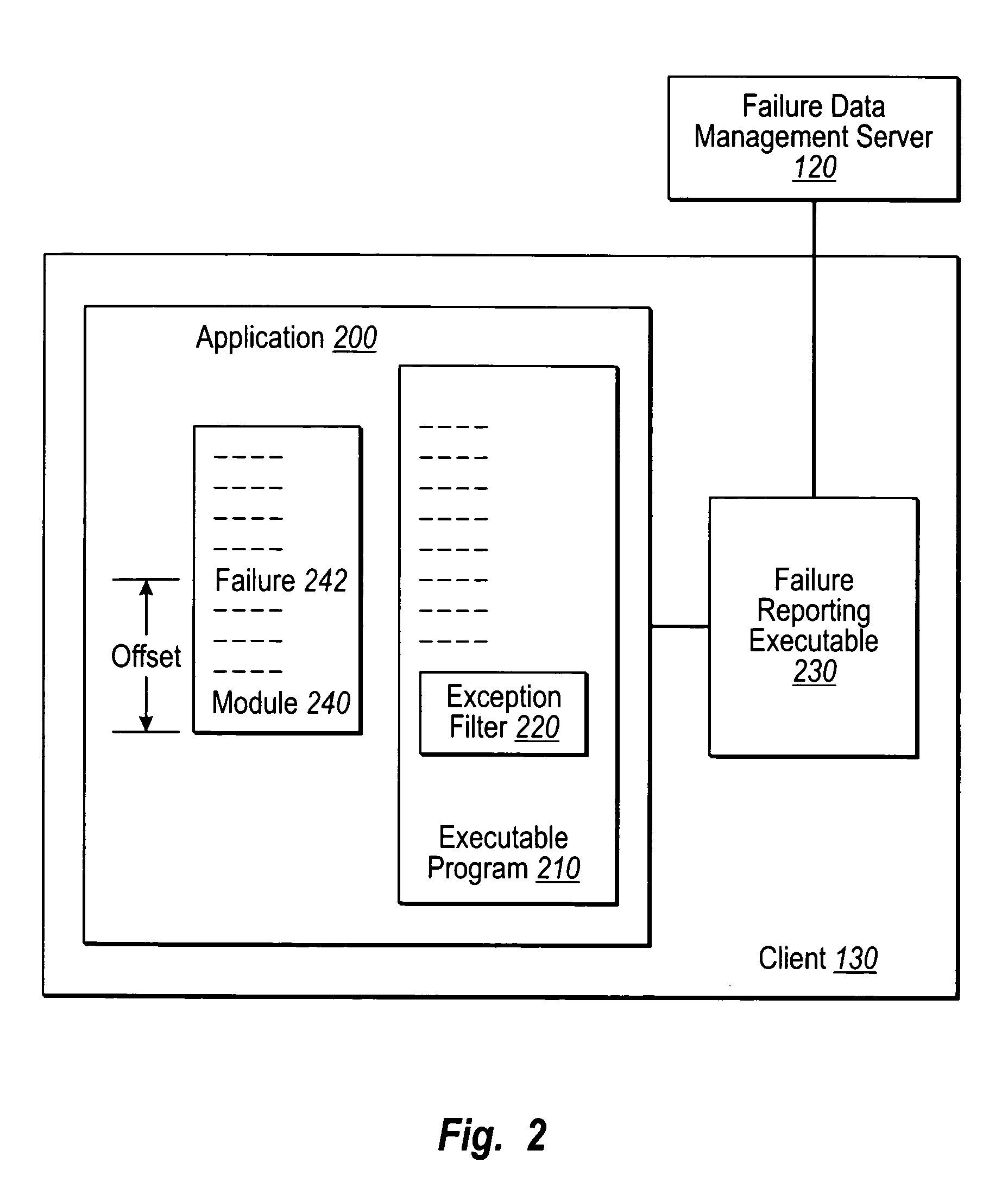Controlling software failure data reporting and responses
a software failure and data reporting technology, applied in the field of software failures, can solve problems such as the termination of the execution of software, the need to repeat recently completed work, and the frustration of users, and achieve the effect of reducing the number of errors
- Summary
- Abstract
- Description
- Claims
- Application Information
AI Technical Summary
Benefits of technology
Problems solved by technology
Method used
Image
Examples
Embodiment Construction
[0027] The present invention relates to methods, systems, and computer program products for controlling software failure data reporting and responses. The embodiments of the present invention may comprise one or more special purpose and / or one or more general purpose computers including various computer hardware, as discussed in greater detail below.
[0028]FIG. 1 is a high-level block diagram of an example failure data reporting and response system 100 in accordance with the present invention. Desktop clients 132 and server clients 134 are examples of clients 130 executing software, such as application software, operating system software, services, and the like.
[0029]FIG. 2 shows a block diagram providing additional detail for an example client 130 that reports a software failure in accordance with the present invention. The client 130 comprises an application program module 200, such as a word processor program module. The client further comprises an executable program 210 running...
PUM
 Login to View More
Login to View More Abstract
Description
Claims
Application Information
 Login to View More
Login to View More - R&D
- Intellectual Property
- Life Sciences
- Materials
- Tech Scout
- Unparalleled Data Quality
- Higher Quality Content
- 60% Fewer Hallucinations
Browse by: Latest US Patents, China's latest patents, Technical Efficacy Thesaurus, Application Domain, Technology Topic, Popular Technical Reports.
© 2025 PatSnap. All rights reserved.Legal|Privacy policy|Modern Slavery Act Transparency Statement|Sitemap|About US| Contact US: help@patsnap.com



